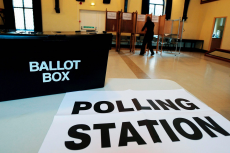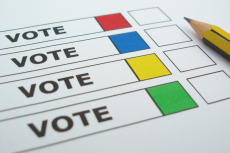
With the next General Election coming up in 2015, it may be useful for you to have a bit of extra knowledge about exactly what goes on during the election period. That way you’ll have a much better idea of what all the commotion is about.
Elections are the process by which the Members of Parliament are chosen for the next Parliamentary session. Each session is a fixed term that lasts 5 years, meaning that at the end of each term, the public have to decide who they want to represent them; both on a local level and a national level. This election, known as the General Election, is incredibly important as not only do voters have to choose who they want to represent their local area; known as a constituency, in the House of Commons, but the election also decides which party will form the government and by extension, who will be the next Prime Minister. In short, the General Election decides who will run the country for the next five years – serious stuff!
The Fixed Term Parliament Act 2011 provides for a General Election to be held on the first Thursday in May every five years, but politicians have a lot of work to do before the election is held. In the months before the General Election, political parties finalise their policy proposals and run campaigns across the country so as to promote their ideas and try to persuade members of the public to vote for them. This often includes public meetings, leaflets and TV broadcasts - so if you start seeing politicians on your screens all the time you’ll know why!

The method used to elect Members of Parliament is referred to as, First-past-the-post. Under this system, the UK is divided up into 650 voting areas called constituencies. Each constituency will have a number of candidates standing for election, members of the public who live in that area then vote for the person they prefer. The candidate who receives the most votes will then become the MP for that constituency and will represent them in Parliament for the next five years. For example, David Evennett is the current MP for the area of Bexleyheath and Crayford, meaning that he represents that constituency until the next election.
Each elected Member of Parliament holds one seat in the House of Commons and each MP represents a particular party. Therefore, each political party is aiming to get the highest number of seats in Parliament; for instance, David Evennett is a Conservative MP, so he would be considered as one Conservative seat. The party with the highest number of MPs elected, in other words, seats in Parliament, wins the election and will form the new government, with the leader of their party becoming the new Prime Minister.
So what actually happens on Election Day? Well, all those who are eligible to vote are asked to go to their local polling station to cast their ballot. Polling stations are local buildings such as schools or community centres where voters go to fill out a ballot form, which is basically a list of all of the candidates running for election in that area. Each voter goes into a voting booth, where they cast their vote in secret by putting an ‘X’ next to the name of their preferred candidate and then putting the form into a ballot box. At the end of the day, all the votes are collected and counted in each constituency. One by one each constituency will then announce which party has won the seat for that constituency, then once all the seats have been announced and counted, the winning party is announced. Needless to say, Election Day is often very tense!
So there you have it. It may sound a bit complicated at first, but the winner of the General Election is basically the party who wins the majority of seats in the Commons; with each seat being won by the person who receives the most votes in each constituency. Simple really!

0 Comment:
Be the first one to comment on this article.